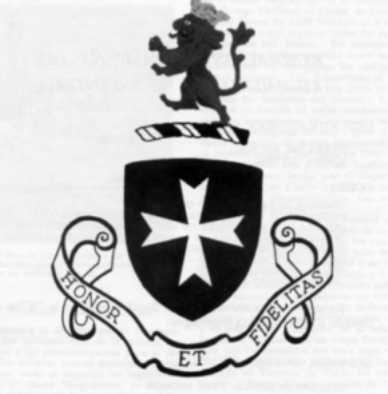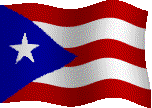I appreciate Col. George Taylor's "The Forgotten War's Forgotten Task
Force" (July), a well-written article on Task Force Dog's role in protecting
the withdrawal of the men of the 1st Marine Division and 7th Infantry Division
southward from Koto-ri.
The Army's role in coming to the assistance of the U.S.
Marines, however, was not limited to Task Force Dog. Another 3rd Infantry
Division formation -- Task Force Childs -- played a more important role in
the events described than is currently recognized by historians. Commanded
by Lt. Col. George Weldon Childs, the 65th Infantry regimental executive
officer, Task Force Childs was given the mission of defending the town of
Maijong-Dong, clearing the division main supply route of enemy forces from
Maijong-Dong to Sudong-ni and protecting the withdrawal of the 1st Marine
Division from Hagaru-ri. A formidable force, it consisted of the 65th Infantry
Regiment's 2nd and 3rd Battalions; Batteries A and B of the 58th Armored
Field Artillery Battalion; the 999th Field Artillery Battalion; Company C,
73rd Engineer Battalion; Company A, 4th Marine Tank Battalion; and the bulk
of the 4th Chemical Company. Thus, while Task Force Dog's mission was to
help the Marines fight their way southward along the withdrawal route, Task
Force Childs' mission was to hold the high ground to the west of the withdrawal
route. Without the successful accomplishment of its mission, it is unlikely
that either the Marines or the men of Task Force Dog would have survived
to fight another day.
The 65th Infantry, the Regular Army's only Hispanic regiment, had arrived
in Korea in September with almost 4,100 U.S. soldiers, making it the strongest
infantry regiment of any service in theater. Since its arrival the regiment
had been attached to the 25th and 2nd Infantry Divisions before finally finding
a permanent home with Maj. Gen. Robert H. Soule's 3rd Infantry Division. By
December the strength of the 65th had declined slightly, although it still
had almost 100 more U.S. soldiers than authorized. No other infantry regiment
in Korea could boast of having 3,900 U.S. soldiers in its ranks. Indeed, with
the exception of the Marine regiments, most had only half that number or
less. Furthermore, the regimental commander, Col. William W. Harris, had purged
the 65th of the 1,100 or so unreliable Korean augmentees forced on the regiment
by Eighth Army upon its arrival in Korea. This ensured a relatively homogenous
and dependable formation. At the time it became part of Task Force Childs,
the strength of Lt. Col. Herman Dammer's 2nd Battalion stood at 897 U.S.
soldiers, while that of Lt. Col. Gerald Allen's 3rd Battalion stood at 947.
Like the regiment in general, both battalions were well served by a veteran
cadre of officers and NCOs.
The situation of the Marines and the two Army task forces was precarious.
Arrayed against them were five Chinese divisions of the Ninth Army Group's
20th and 27th Chinese Communist Forces Armies (CCF). The 58th CCF Division
was deployed to the west of Hagaru-ri while the 76th CCF Division was deployed
to the southeast. The 77th and 60th CCF Divisions were deployed to the north
and south of Koto-ri respectively. Finally the 89th CCF Division was deployed
to the east of Sudong and Maijong-Dong. The Chinese, who were intent on annihilating
the U.S. force, had large numbers of reinforcements available and could easily
make up any losses. According to Brig. Gen. Armistead D. Mead, the 3rd Infantry
assistant division commander and commander of Task Force Dog, the enemy were
"aggressive, well-trained and armed with a high percentage of automatic weapons
and mortars."
Elements of Task Force Childs attacked and occupied the high ground west
of the Maijong-Dong - Sudong-ni road early on the morning of December 8 to
protect Task Force Dog's movement to Chinhung-ni and the 1st Marine's movement
to Koto-ri. Task Force Childs then withdrew to Maijong-Dong as planned, leaving
Company G, 65th Infantry, in position on the heights west of Sudong-ni. The
following day the Chinese began a series of blistering assaults on the company
in an attempt to break through to the main supply route and block the withdrawal
of the 1st Marine and 7th Infantry Division troops. Had they succeeded, the
survival of the column would have been seriously jeopardized. The men of
Company G, however, held their ground, repulsing the Communist attacks on
December 9 and 10 after bitter fighting. On December 10 alone the Puerto
Rican soldiers inflicted some 150 casualties on the enemy. The Chinese continued
their relentless assaults launching three attacks on the morning of December
11. During the third attack they finally succeeded in breaking through the
defensive positions and swarming onto the road as the regimental train of
the 1st Marines started through the town. A determined counterattack by Marines
and soldiers of Task Force Dog cleared the road and bordering buildings,
finally breaking the enemy's will to continue the battle. No further fighting
took place while the column from Koto-ri completed its withdrawal behind
Task Force Dog and shielded by Task Force Childs. Both task forces were disbanded
after the Marines and men of the 7th Infantry Division reached Chinhung-ni.
Lt. Col. George W. Childs and SFC Felix G. Nieves of Company G both won the
Silver Star for gallantry in action at Sudong-ni.
The mission of the two 3rd Infantry Division task forces were so closely
intertwined that for many years veterans of the 65th Infantry believed they
had fought as part of Task Force Dog rather than Task Force Childs. Many still
do. However, unit command reports at the National Archives reveal that Task
Force Childs was a separate formation, equally worthy of attention and praise
for its critical role in protecting the men of the 1st Marine Division and
the 7th Infantry Division.
COL. GILBERTO VILLAHERMOSA
Regional Headquarters Allied Forces North
Brunssum, The Netherlands
 ...............
............... ...............
...............
 ...............
............... ...............
...............